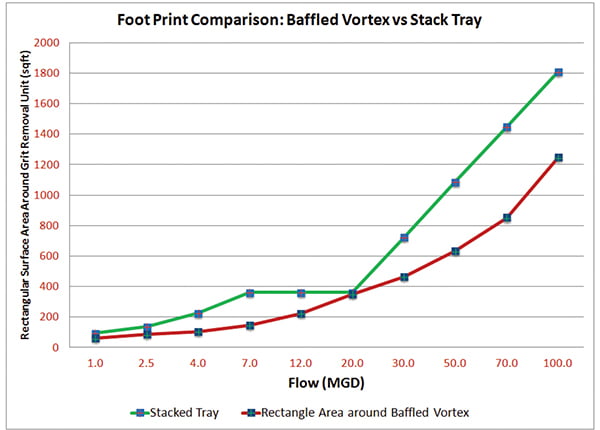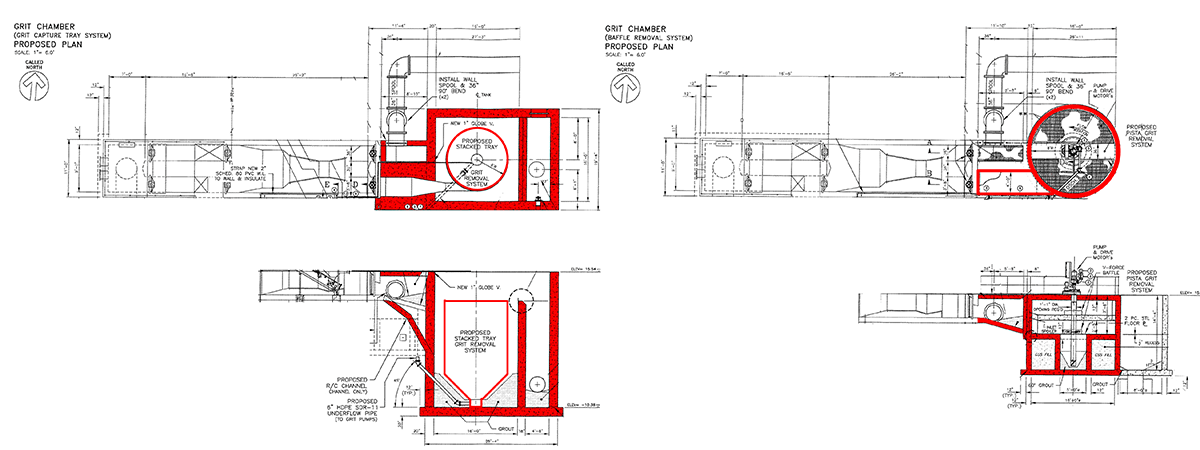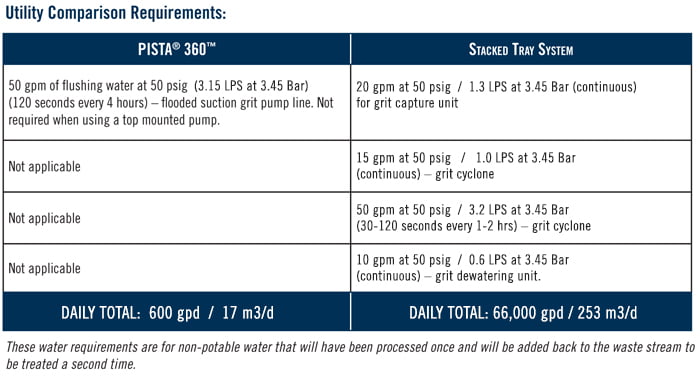Let’s see how the PISTA® Grit Removal System stacks up to stacked tray systems.
How Do These Grit Removal Systems Stack Up?
Key Differences you Need to Know About Stacked Tray Systems:
- Conventional Settling Utilizing Internal Plastic Plates
- Much Higher Initial Purchase Price
- Higher Installation Costs — Greater Concrete Volume Tankage and Total Footprint
- Higher Annual Energy & Utility Costs
- Greater Headloss for Systems 20 MGD (75,708 CMD) and Under
- S&L systems are Completely USA Made and Developed by an American company.

A stacked-tray manufacturer has a history of misrepresenting S&L PISTA® technology (lumping it with other conventional sloped-floor vortexes), using questionable, embellished, and/or non-sourced data and reports, while attempting to shift conversation away from what matters relative to PISTA® system design.
Installation Cost Factors
Stacked-Tray Design / Installation Cost Factors vs. S&L
- Stacked-tray has a significantly higher purchase price.
- Stacked-tray requires larger concrete basin / construction costs
- Stacked-tray has a higher total installed cost
- Stacked-tray has smaller max. capacity units (up to 36 MGD (136,274 CMD) through 12-tray system).
The PISTA 360® offers a lower footprint & much lower installation costs than Stacked-tray systems.
Stacked tray footprints will vary depending on project requirements. However, stacked-tray units can often require deeper settling basins to house their settling devices inside (especially when adding a grit collection hopper). Compare below the average grit tank footprint (area) between both system types based on the average of more than 30 published project design specifications.

Footprint Considerations in Cost
Side-by-Side Project Example
Location: Texas
Bid Time: November 2015

Operational Cost Factors
Stacked-Tray Design / Operational Cost Factors (vs. S&L)
Most stacked-tray relies on 24/7 continuous grit pumping = higher energy costs
Stacked-tray requires higher utility water requirements (at least 86,000 gpd (328 m3/d)) = higher op costs
If Stacked-tray systems are designed to remove 75 micron particles, organics will necessarily be captured and processed in the grit handling system, creating higher odor potential and additional grit washing needs. Residual organics are continuously recycled.
Stacked-tray systems must require basin draining in order to periodically clean build-up of grease and oil on the trays (which can collect other debris over time if not cleaned). Likewise grit can build up in the bottom of the basin over time.


Performance Factors
Stacked-Tray Performance Factors (vs. S&L)
A stacked-tray manufacturer claims 95% removal down to 75 microns, but in actuality they derate for peak flows: Peak flow 18 MGD (81829 CMD): 95% of all grit 100 micron (140 mesh) and larger. Average flow 6 MGD (27276 CMD): 95% of all grit 75 micron (200 mesh) and larger.
Significantly fewer proven installations over time
Stated removal efficiencies decrease for peak flows
Removes untreated organics along with grit
75 microns (200 mesh) can be size of organic particles and their grit dewatering equipment cannot possibly differentiate from a silt-like grit and organics so essentially, these are continuously recycled.
Maintenance: oil / grease build-up on trays requires dewatering to clean. One designer indicated to us that they always include money to allow for this circumstance.